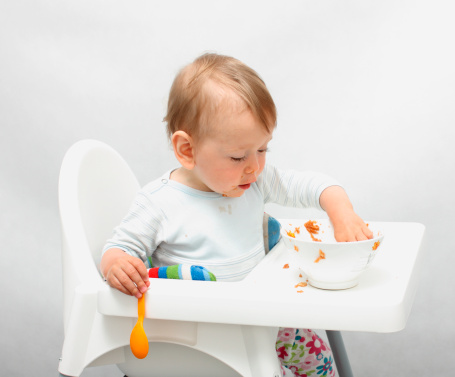High chair injuries on the rise

You may not believe it until it happens to your child, but a high chair can pose serious risks. This is because of the increased chair height and the fact that high chairs are often placed on hard floor surfaces and next to firm surfaces such as tables or counter tops
The Center for Injury Research and Prevention (CIRP) recently released data from the longest and largest investigation of high chair-related injuries in the United States. As part of the study, CIRP researchers examined emergency department data from 2003 through 2010, focusing on these injuries in children ages 3 and younger.
The study, published this week in the journal Clinical Pediatrics, found that more than 9,400 children were treated annually for an injury related to a high chair or booster seat.
The research also uncovered that 93 percent of the injuries resulted from a fall. When asked, 67 percent of the parents stated that their child was standing or climbing on the chair before the fall. The most common diagnoses were concussions and internal head injuries, followed by bumps and bruises.
“It’s sad to hear this report because most of these high chair-related injuries can be prevented,” says Dr. James Doherty, director of trauma surgery and critical care services with Advocate Medical Group, on staff at Advocate Christ Medical Center in Oak Lawn, Ill.
Dr. Doherty offers the following tips to keep children safe while in their high chair:
- Always use the safety straps in the chair. A tray is not enough to keep a child secure. It may seem time consuming to buckle a child in every time, but it sets a good routine and offers the most assurance possible that the child will not fall. It’s best to use a chair with either a 5-point or 3-point harness. Double check that the straps are firmly attached to the chair and they are working properly.
- Check for product recalls. If there is a faulty safety strap or other security device, you can find out about it on www.recalls.gov.
- Teach your child not to climb or stand on the chair. Both are fall risks and can cause the chair to tip over, taking your child down with it.
- Place the high chair in an open space at a distance from the table. Children can kick a table, wall or counter so hard that they tip over the chair.
- Make sure the chair is stable and doesn’t wobble around. If the chair has wheels, make sure they are locked before placing your child in the seat.
“Using high chairs and booster seats are still safer for children under 3 than using regular chairs,” he says. “The key is to use them thoughtfully in order to prevent injury.”
Related Posts
Comments
About the Author
health enews staff is a group of experienced writers from our Advocate Health Care and Aurora Health Care sites, which also includes freelance or intern writers.

















